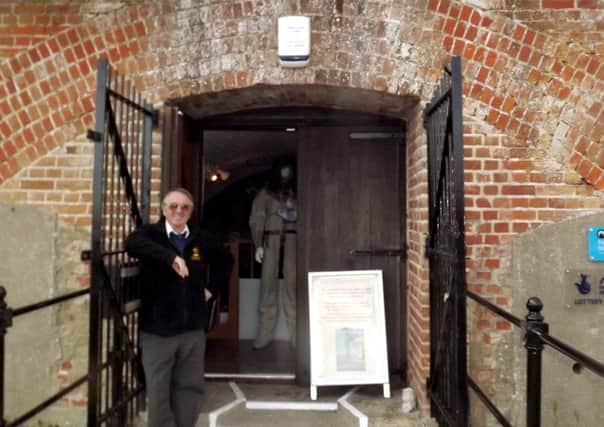A tribute to the ones who plunge beneath the waves


It is located in a former fortification that once formed part of a chain of five batteries along the coast in this neck of the woods and was part of Palmerston’s Follies.
The society was founded in 1990 with the museum opening in 2011. It is the only one of its kind in the UK. It is open every weekend plus bank holidays from Aprilto October, 11am to 4pm.
Advertisement
Hide AdAdvertisement
Hide AdThere are many exhibits to be seen (and touched) including diving bells, chambers, sports diving equipment and even an underwater breathing set used in a James Bond film.
The chairman of the diving society is John Bevan, who is also the author of Commander Crabb – What Really Happened? – the real story of the mysterious disappearance of the diver who vanished in Portsmouth Dockyard in 1956 during a spying mission under a Russian warship. John is also one of 24 volunteer guides at the museum.
The main part of the building is dedicated to the museum, but to the south the former cordite room is open to visitors who can see a part of the battery that was, until recent times, a nuclear bunker, I kid you not. It includes a very un-private privvy (lavatory) built in the corner of a passageway without any privacy whatsoever.
It is a fascinating place to be.
Another interesting part of the collection is the Commander Crabb display showing his and Sydney Knowles’s medals.
Advertisement
Hide AdAdvertisement
Hide AdKnowles assisted Crabb on many missions and the display includes Knowles’ red woollen hat and diving short sword.
There is also a mention of William Walker, who saved Winchester Cathedral when he dived into the foundations of the cathedral to help shore up the walls which were on the verge of collapse.
Also on show are several hand-pumps which supplied air to the diver under water.
Invented more than 150 years ago, the pumps’ design was still in use until the 1980s when they fell foul of dreaded health and safety regulations.
Advertisement
Hide AdAdvertisement
Hide AdOutside the museum, an assortment of diving bells and chambers, including the one in which John spent 15 days, can be inspected.
John is a hugely experienced diver and diving consultant. He is often called on to give evidence on diving accidents worldwide.
In 1970, the deepest simulated test dive was 1,150ft. John and his colleague entered the chamber and spent 15 days reaching a simulated depth of 1,553 feet, a world record for the time.
Many talks are given by John and also put on at the museum by guests about all aspects of diving. Go to thehds.com/museum/ for all information.
For just £3 for adults and £2 for under-16s this museum, voted one of the top six family-friendly museums in the UK in 2015, is a must for a day out. Ample parking and a cafe are alongside.